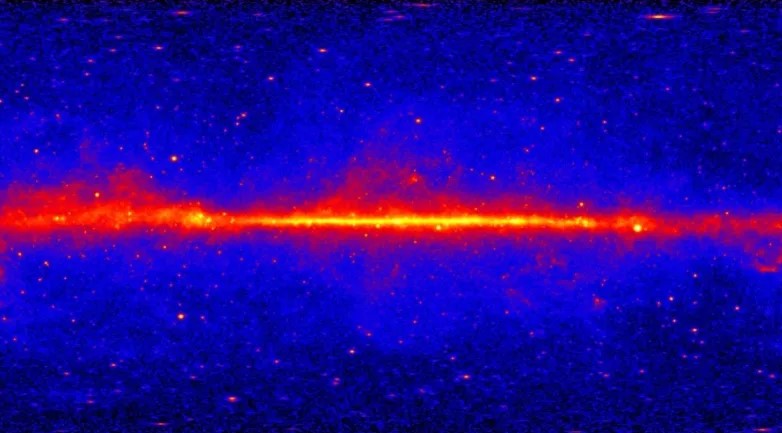
Your smartphone has a particle detector on it, and scientists want you to help them uncover how the universe really works and maybe even discover the true nature of dark matter. There are just a few bugs to work out.
High-energy particles from space, called cosmic rays, constantly bombard the Earth. There are all sorts of things we might be able to learn about the universe by studying those particles. We’ve previously discussed high-tech, expensive equipment used to monitor them. But the physicists behind a new project want your smartphone to help gather data on these cosmic rays, hopefully revealing new insights into dark matter and other strange phenomena.
“This project can only be successful with a large number of people,” Piotr Homola, associate professor at the Institute of Nuclear Physics at the Polish Academy of Sciences, told Gizmodo. “We need public engagement on an unprecedented scale.”
Homola is the spokesperson of the Cosmic-Ray Extremely Distributed Observatory (CREDO). There are a number of things you might be able to do with a worldwide cosmic ray detector, but one of CREDO’s main goals is to spot the highest-energy light particles in the universe. Imagine—the smallest possible blip of light, but with the energy of a baseball thrown by a Major League pitcher. These particles might be a sign of dark matter in the universe—but who knows?
With CREDO, Homola hopes to create a worldwide cosmic ray observatory, combining observations from smartphones and the top particle detectors. He’s already built an app where users can begin identifying cosmic rays using the Zooniverse platform, as well as a particle-detector app available in the Google Play store called the CREDO Detector.
CREDO’s app joins DECO and CRAYFIS, two other particle-detector apps that use mobile phone cameras in order to detect high-energy particles. Phone cameras contain semiconductors that are sensitive to these particles, and location information to tell physicists where the particles hit. Homola is hoping to partner with all of these apps and use their data in a wider network. “We are in touch with [CREDO] and talking about how to work together to combine data from different kinds of detectors,” said Daniel Whiteson, University of California, Irvine physicist and principal investigator of CRAYFIS.
Homola discussed all sorts of physics benefits to having such a detector, as well as other, wilder ideas—like one hypothesis that perhaps there’s a link between particles from space and multiple sclerosis diagnoses. He recognized that this is a farfetched idea, but wanted potential users to know that there are benefits to a vast, global cosmic ray database aside from just high-energy physics.
I downloaded CREDO’s app on Ed Cara’s Android phone—it runs hot and eats a lot of battery (it uses the camera) so it’s best to run passively in the background while the phone is plugged in. I didn’t detect any particles suggestive of a cosmic ray, but I only ran the app for about five minutes. CRAYFIS is still in its beta phase, and DECO took a little more work to set up.
But perhaps these apps will someday be in a usable-enough state that you can help physicists do some really cool science.

